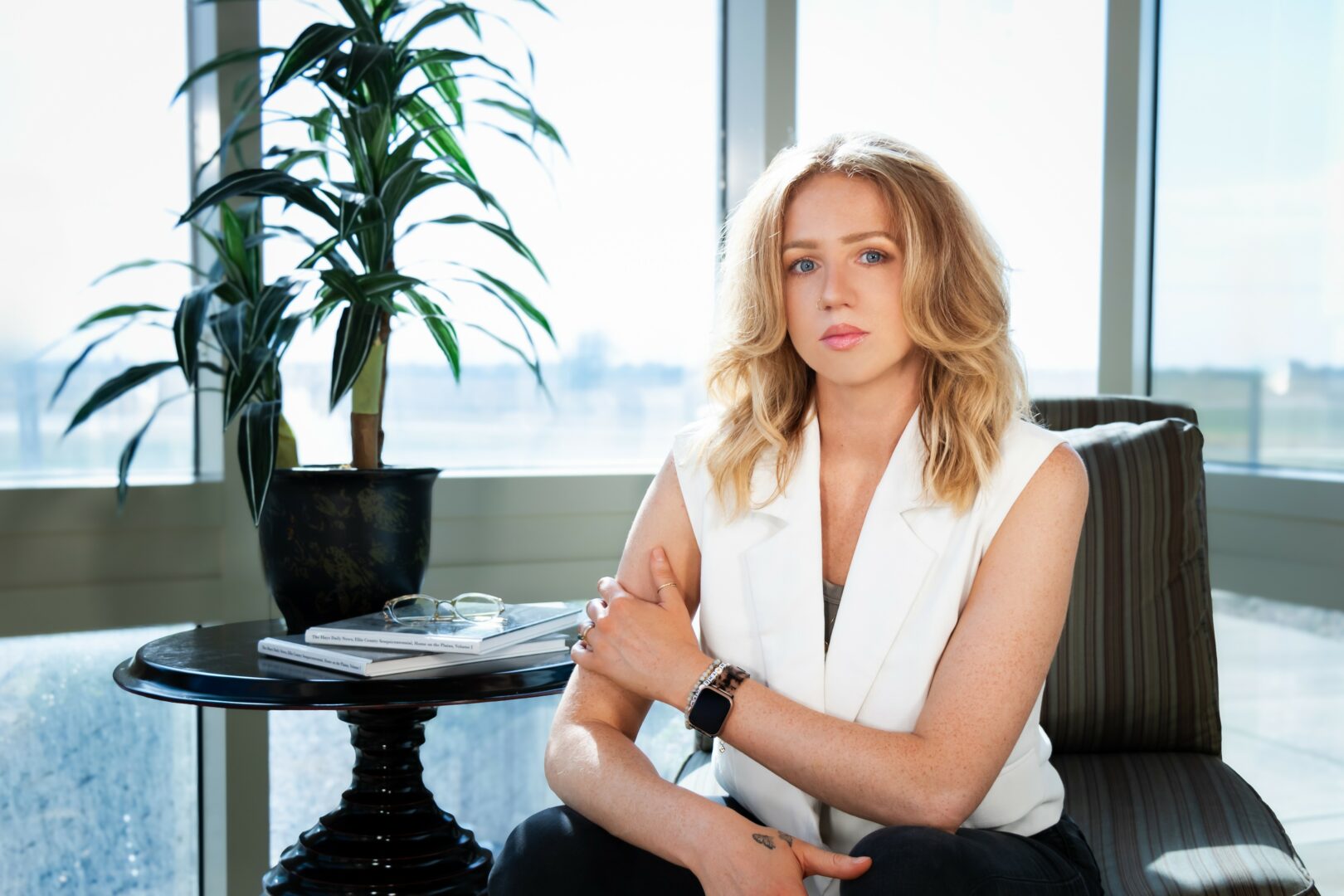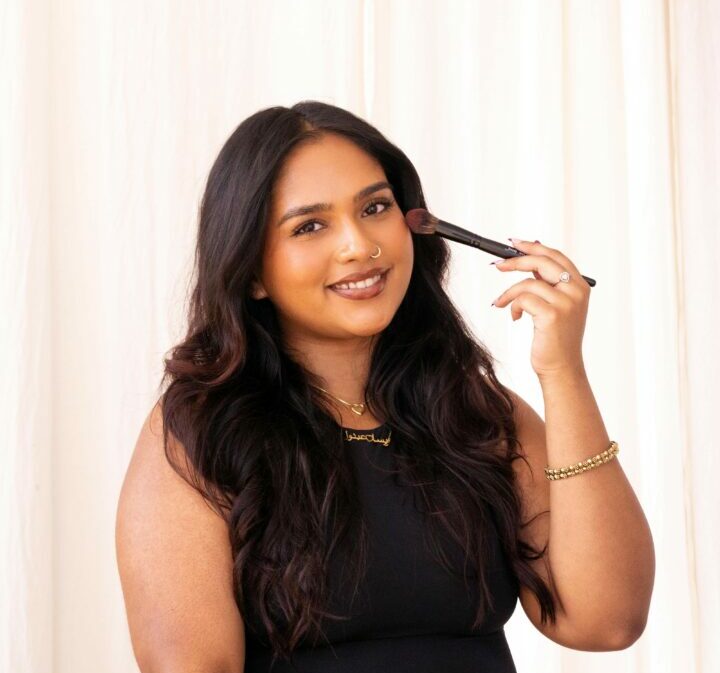We caught up with the brilliant and insightful Lilach Porges a few weeks ago and have shared our conversation below.
Hi Lilach, great to have you with us today and excited to have you share your wisdom with our readers. Over the years, after speaking with countless do-ers, makers, builders, entrepreneurs, artists and more we’ve noticed that the ability to take risks is central to almost all stories of triumph and so we’re really interested in hearing about your journey with risk and how you developed your risk-taking ability.
The development of my ability to take risks stems from various factors. Firstly, it arises from a burning passion or a compelling idea that I believe is worth pursuing, regardless of the uncertainties involved. Additionally, external support, particularly the emotional encouragement from loved ones, plays a significant role in bolstering my confidence to take risks. Over the course of my creative journey, I have consistently embraced risk-taking, starting with small ventures and gradually tackling challenges that initially seemed insurmountable. An example of one of the most recent and significant risks I undertook was the launch of my inaugural ready-to-wear robot-printed fashion collection at New York Fashion Week. Dubbed the Roller Coaster Collection, the entire process of conceptualization, production, and event organization had to be completed within a tight one-month timeframe. Despite the daunting workload and uncertainties surrounding its success, I was compelled to see it through to fruition. I felt a deep sense of accountability not only to those who had been invited but also to myself.
The immersive showcase experience featured a mesmerizing fusion of technology and fashion, with a robotic arm 3D printing a dress live, alongside interactive installations and a fashion show. Drawing inspiration from the dynamic shapes and vibrant colors of a roller coaster, the collection’s designs were meticulously crafted to dictate the robot’s movements, thereby influencing the drapery of the material around the human body.
The event, held on February 8th, 2024, at Tals Studio in New York, garnered significant attention from industry professionals and influencers alike. More than 100 attendees, including magazine editors, reporters, stylists, fashion designers, curators, and esteemed academics, marveled at the cutting-edge display. Witnessing an actual ABB robot in action drew considerable fascination, with attendees eager to capture the moment through videos and photographs.
Reflecting on the Roller Coaster collection and fashion show, I am immensely proud of the outcome and deeply grateful to everyone who supported me throughout this endeavor. Their unwavering encouragement and assistance were instrumental in turning my vision into a reality.
Thanks for sharing that. So, before we get any further into our conversation, can you tell our readers a bit about yourself and what you’re working on?
The strongest memories of my childhood are the ones in which I was cutting and piecing together old fabrics and clothes in my room, sculpting new silhouettes of garments around my body.
However, I was always drawn to mathematics and computer science, but I never felt complete when choosing between art and science. I decided to study architecture because I believed it would be a good combination of logic and creativity, and it would open my mind to new ideas.
This proved to be true when I was exposed to parametric design, 3D printing, and new technologies such as robotic arms. As someone who always dreamed of being a fashion designer, in the back of my head, I couldn’t help but think about how to take this new knowledge to the world of fashion.
This is why I combine fashion with technology and research more sustainable production methods to create the fashion of the future. My work centers around developing innovative methods for 3D printed garments with robotic arms, exploring architectonic shapes with the ambition to bring the worlds of science, engineering, and fashion together to empower women.
Another big part of my work is designing fashion that will make the person wearing it feel confident about themselves and self-complete with the person they chose to be. The design journey is where my hurt lays, from concept research and draping to sketching, creating flats and tech packs, sourcing materials, sewing, and refining craftsmanship. I relish the opportunity to be inventive in pattern making and the shapes of the garments on the body. I extend the limits of design software, such as Adobe, to design prints and make fashion flats and patterns.
My approach is characterized by a steadfast, organized, and cohesive methodology. I gravitate towards the most complex and challenging assignments, tackling them with an unwavering commitment to excellence. My best friends would describe me as highly motivated, inspiring, and a person who stays relaxed in the most stressful situations.
If you had to pick three qualities that are most important to develop, which three would you say matter most?
Reflecting on my journey, I attribute much of my progress to three pivotal qualities:
Courage to Embrace Risk: Throughout my journey, I’ve learned to embrace calculated risks. These moments of stepping into the unknown have often been where I’ve experienced the most growth and reward. My advice to those starting out is to cultivate this willingness to take risks, understanding that failure is often a stepping stone to success.
Curiosity and Continuous Learning: I’ve always been driven by an insatiable curiosity, leading me to explore diverse fields and acquire a breadth of knowledge. This exploration not only broadened my horizons but also provided invaluable insights into my own passions and strengths. To those embarking on their journey, I recommend adopting a mindset of lifelong learning. Embrace new experiences and subjects, as they may uncover hidden talents and passions that guide your path forward.
Self-Reliance and Independence: Developing the ability to stand on my own and make independent decisions has been crucial. While seeking guidance and advice from mentors and peers is important, learning to trust my instincts and chart my own course has been empowering. I encourage young individuals to cultivate self-reliance, trusting in their abilities and instincts while also remaining open to constructive feedback and guidance.
In essence, my journey has been shaped by a combination of daring to take risks, embracing continuous learning, and fostering self-reliance. My advice to those at the outset of their journey is to embrace these qualities wholeheartedly, fearlessly pursuing their passions and dreams while remaining open to the lessons that each experience brings.
Looking back over the past 12 months or so, what do you think has been your biggest area of improvement or growth?
Over the past year, I’ve experienced significant growth and development across various aspects of my career in fashion. One notable milestone was completing my MFA program at the Fashion Institute of Technology in New York, culminating in the debut of my thesis collection, which was the first on the runway during New York Fashion Week in September. A pivotal achievement was securing first place in the sustainable fashion/textile category of the Arts Thread and Gucci’s Global Design Graduate Show 2023 competition. This recognition underscored my commitment to merging innovative technologies, such as robotic arms, with sustainable materials to revolutionize the fashion industry.
Collaborating with Instagram’s design account allowed me to showcase my creative process through an original video, highlighting the journey from sketching to the final photoshoot. Building on this momentum, I founded my own fashion brand, PROCODE_DRESS, with a mission to pioneer robot-printed garments that streamline production processes and minimize environmental impact. Our designs prioritize both style and sustainability, empowering individuals to embrace their unique identities with confidence.
Utilizing Xtellar’s sustainable 3D printing materials:
- Xtellar’s Braskem bio–EVA FL600EVA-BIO is a bio-based ethylene vinyl acetate (EVA) filament, derived from raw sugar care. This low carbon footprint formulation delivers a unique combination of sustainability, flexibility, ductility, light-weighting, and moisture resistance.
- Xtellar’s Braskem GR605R-CF is a polymer that contains 90% recycled materials, including recycled bottle caps and recycled carbon fiber.
The culmination of these efforts was the unveiling of PROCODE_DRESS’s inaugural ready-to-wear fashion collection at New York Fashion Week, marking a significant milestone in my career. Additionally, I launched my web shop, offering 3D-printed jewelry crafted from sustainable materials, including bio-based ethylene vinyl acetate (EVA) filament and recycled polymer containing carbon fiber.
Looking ahead, I am excited to introduce the robot-printed Roller Coaster collection for sale, further expanding our offerings and advancing the dialogue on sustainable fashion. Visit our website to explore our latest creations and join us on this transformative journey: https://www.procode-dress.com/.
Contact Info:
- Website: https://www.procode-dress.com/
- Instagram: https://www.instagram.com/lilachporges/
- Linkedin: https://www.linkedin.com/in/lilachporges/








Image Credits
Photographers: Zion Yoni Levy, Ron Adar, Jennifer Katzman Models: Loli Aneova, Sophia Donnell, Innassa Brich, Olivia Karrer, Bethany Chasteen, Angela Zhang Hair stylists: Helene Marie, Jennie Segedin & Andrea Victoria Sáliva Makeup Artists: Nicolle Cruz, Sweekriti Dahal & Axel Hurtada, Olivia Perez-Fung Studio space: Tals Studio Robotic arms: ABB & New Bedford Research & Robotics 3D printing sustainable materials: Xtellar




